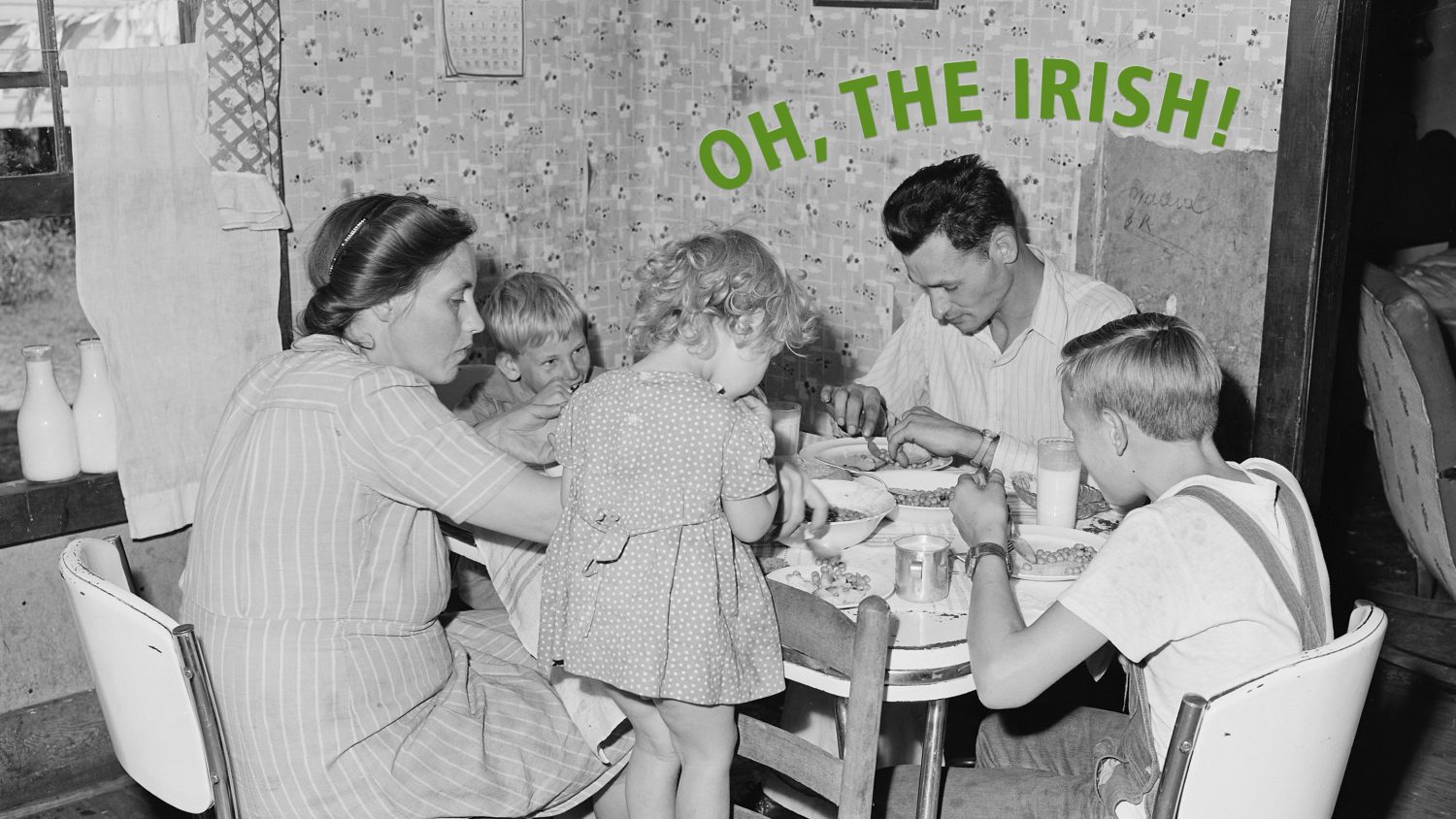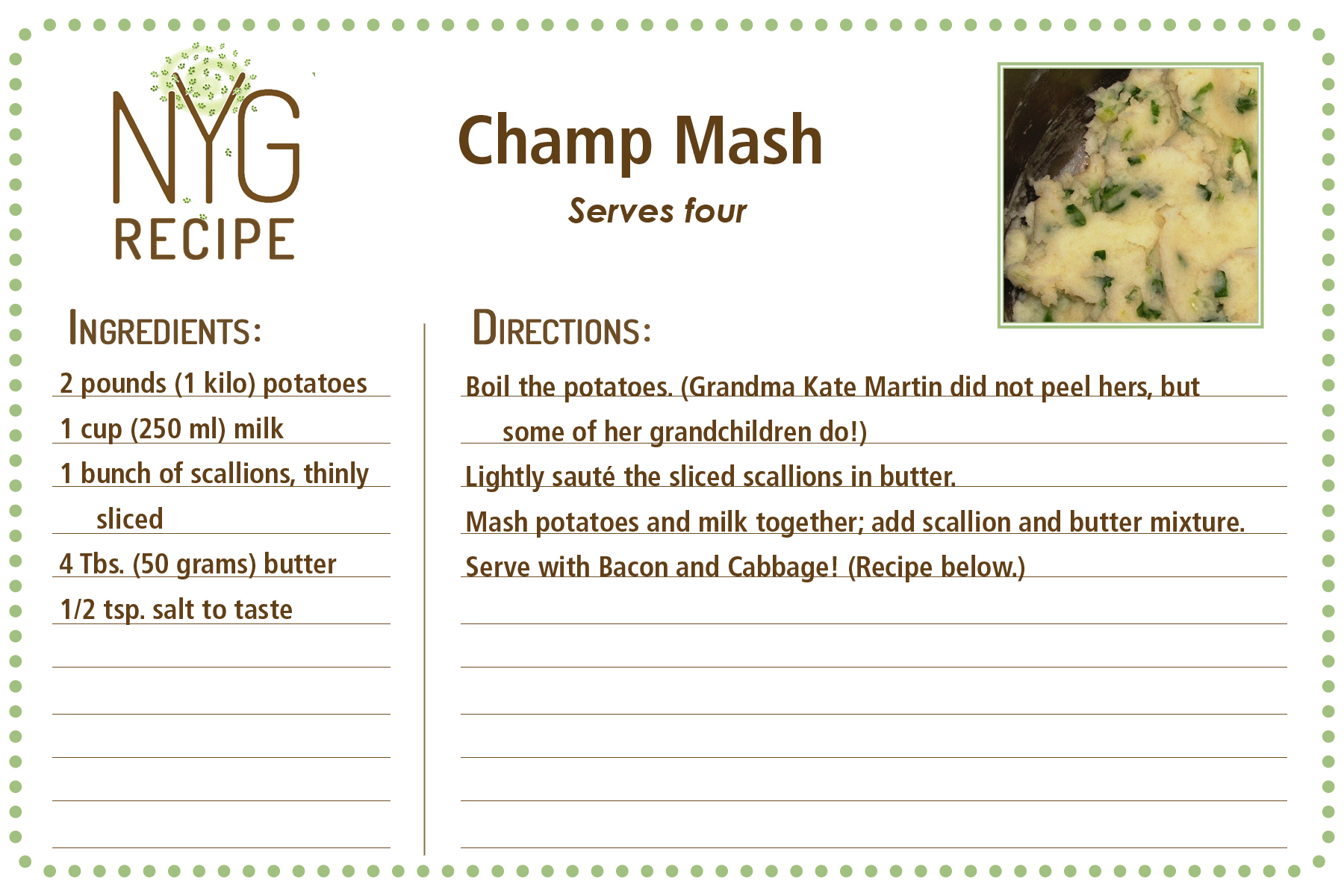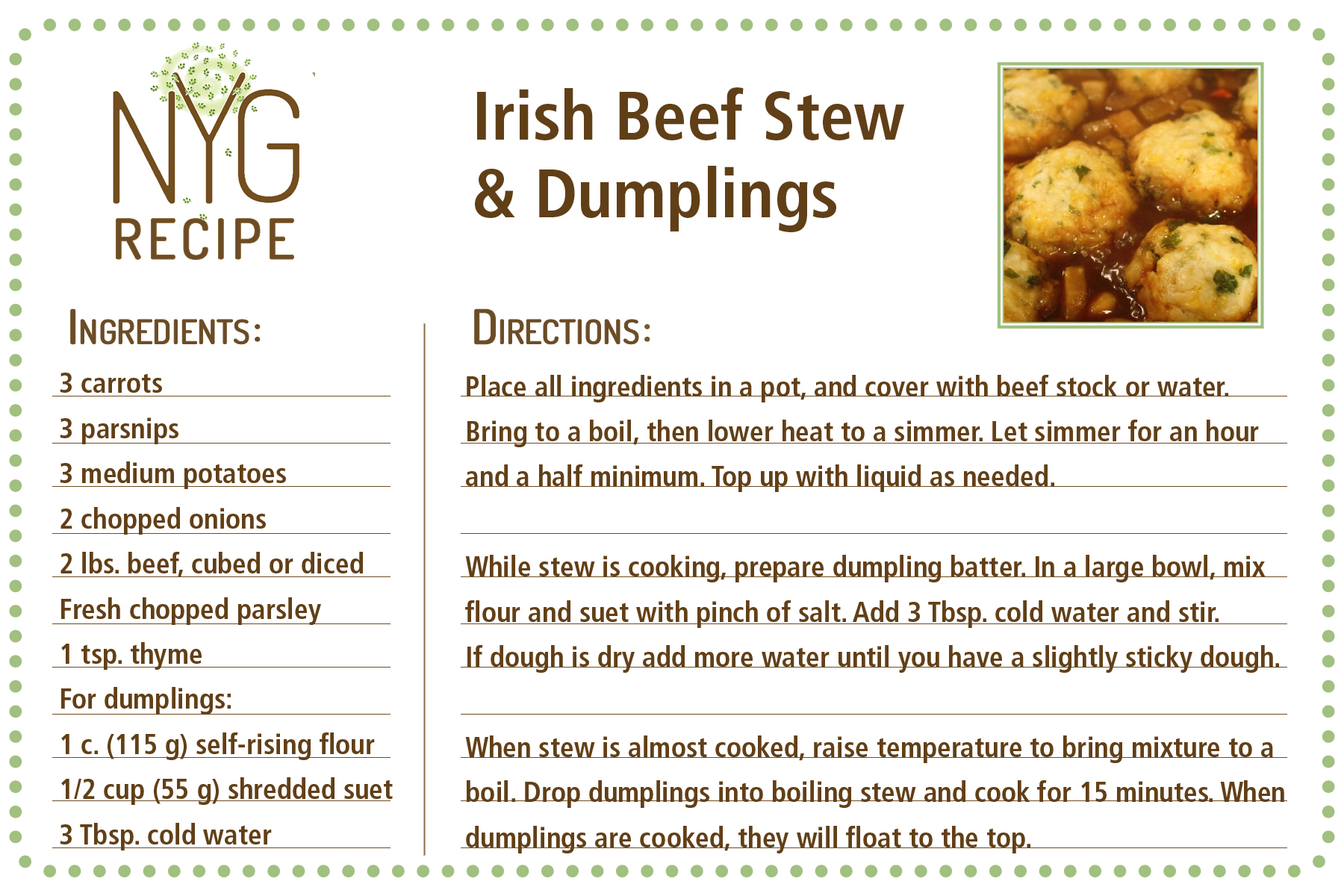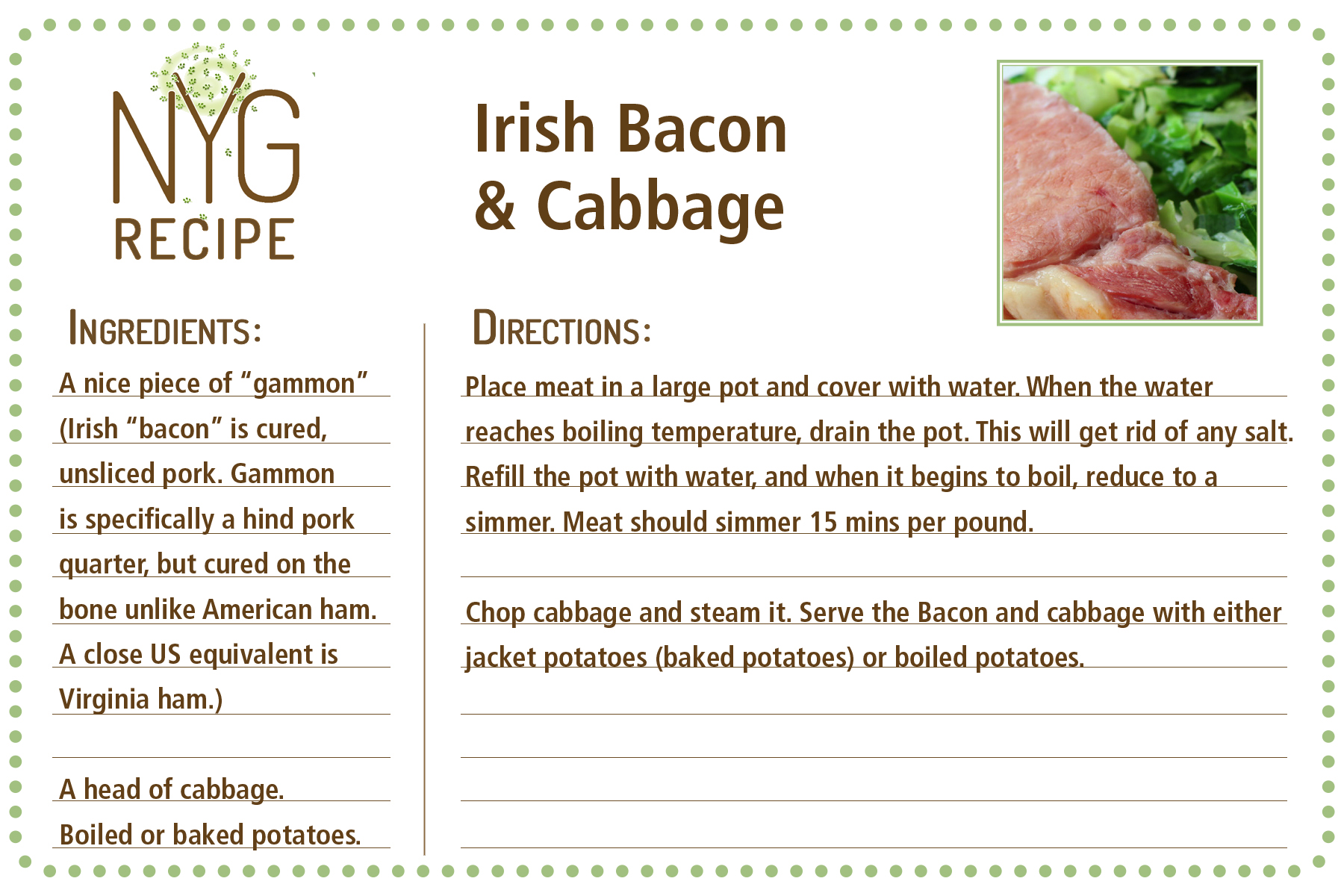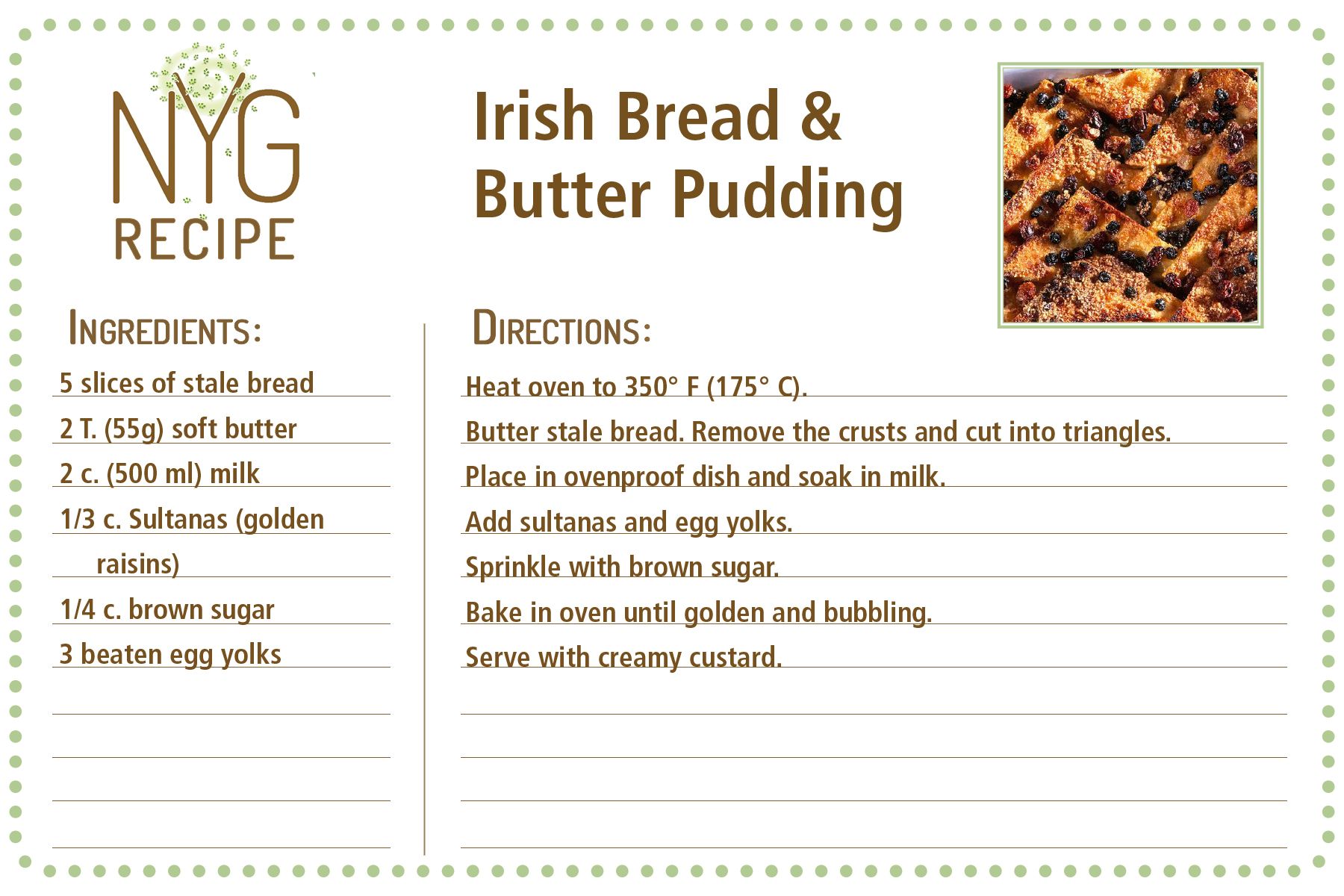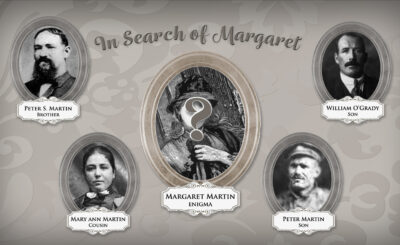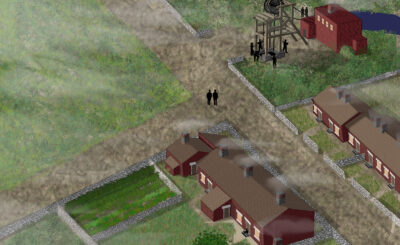Try feeding your family some delicious food history!
Food is one of the most powerful ways to bring back old and establish new memories. Many of our rituals and traditions are built around food; so much comfort and bonding is built into eating together. In fact, studies suggest that eating together at least a few times a week improves kids’ academic performance, self-esteem, and resilience, while decreasing rates of depression, substance abuse, and teenage pregnancy.
Couple that with family food history on occasion, and SHAZAM! So much goodness!
With St. Patrick’s Day approaching, I felt the need to feed my Irish. We’ve recently discovered (through research and DNA testing) a wonderful Irish branch of our family, chock full of Irish cousins—they are quite delightful! Wanting to be truly authentic, I turned to them for recipes. They kindly obliged with their own traditional favorites as well as dishes that Grandma Kate Martin (Great-Uncle Peter’s wife) would cook at their home in Killester, County Dublin, Ireland.
(All recipes are downloadable through the link at the bottom of the page.)
You say “po-TAY-to,” I say “po-TAW-to,” but the Irish say “pa-DATE-o.”
Potatoes have always been a staple food in Ireland—especially among the poor—and they feature in many favorite dishes. The potato blight that hit Europe in the 1840s devastated Ireland, where more than one-third of the people relied upon potatoes as their main food. In the resulting famine, one million people died and another million emigrated. Ireland lost one-fourth of its population between 1845 and 1849.
I believe that eating potatoes on St. Patrick’s Day is an act both symbolic and celebratory. We honor those who struggled to survive in extreme times, both those who died and those who scattered and blessed the world with dogged and wily Irishness. We also celebrate the plenty we enjoy—which we would not have without the persistence of our forebears.
All hail the potato!
These two recipes come from Patricia Overton, who was born in Dublin and now lives in Westport, Ireland. She recommends using Maris Piper or King Edwards potatoes (available in Ireland) which are similar to the russet in the US.
For the next recipe, Irish beef Stew and Dumplings, Patricia suggests that cooks may want to roll little patties of dough in a floured hand and pop them into the pot. But she recalls her parents would just drop the dough straight off the spoon into the boiling stew.
Many Irish traditional foods reflect the humble home life our forebears knew. Many were Catholic, with large families and few resources. Using basic, inexpensive foods such as cabbage, potatoes, and bread, they created fabulous dishes that are still enjoyed today. Ann Lipscomb—also born in Ireland, but since transplanted to a cottage in rural England—offers this heart-warming favorite dish: Bacon and Cabbage.
Of course what the Irish call bacon is a far cry from what Americans serve up with their fried eggs. (I’ve been informed that sliced bacon is actually “rashers”!) Irish Bacon is a joint of pork cured still on the bone in a bacon-type fashion.
No meal is compete without dessert! Bread and Butter Pudding is a simple but tasty Irish dish that also serves to use up stale bread. Waste not want not! There are many variations on this dish, however, this recipe is a Martin family original, what Grandma Martin taught her children to make in Killester.
More Recipes Recommended by the Irish Cousin Brigade
Slow Cooker Corned Beef—recommended by Monica Brack
Dublin Coddle—recommended by Esmonde Kelly. This dish seems to be either loved or hated among the Irish! Try it and see what you think.
Richard Corrigan’s Irish Stew—recommended by Peter Christopher Martin.
Have a wonderful St. Patrick’s Day! While you’re feasting on cabbage and stew, be sure to tell a story or two about your Irish family. And remember, remember them!

